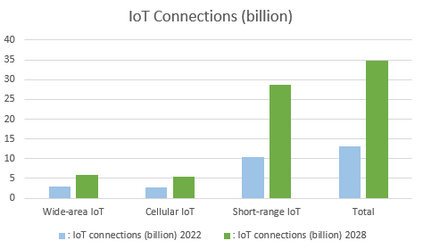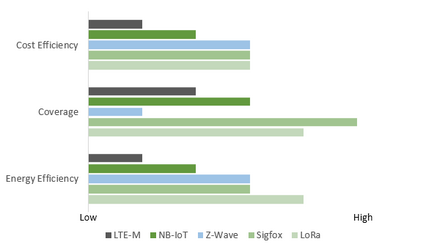With the emergence of 5G, the Internet of Things (IoT) will bring about the next industrial revolution in the name of Industry 4.0. The communication aspect of IoT devices is one of the most important factors in choosing the right device for the right usage. So far, the IoT physical layer communication challenges have been met with various communications protocols that provide varying strengths and weaknesses. And most of them are wireless protocols due to the sheer number of device requirements for IoT. In this paper, we summarize the network architectures of some of the most popular IoT wireless communications protocols. We also present them side by side and provide a comparative analysis revolving around some key features, including power consumption, coverage, data rate, security, cost, and Quality of Service (QoS). This comparative study shows that LTE-based protocols like NB-IoT and LTE-M can offer better QoS and robustness, while the Industrial, Scientific, and Medical (ISM) Band based protocols like LoRa, Sigfox, and Z-wave claim their place in usage where lower power consumption and lesser device complexity are desired. Based on their respective strengths and weaknesses, the study also presents an application perspective of the suitability of each protocol in a certain type of scenario and addresses some open issues that need to be researched in the future. Thus, this study can assist in the decision making regarding choosing the most suitable protocol for a certain field.
翻译:暂无翻译






